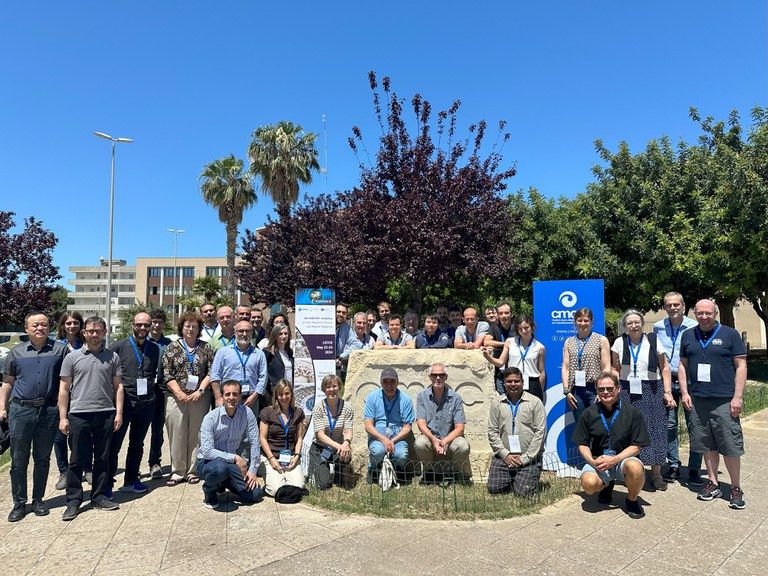Report from the 8th ENES HPC Workshop
The 8th European Network for Earth System modelling (ENES) Workshop on High Performance Computing for Weather and Climate was held in Lecce, Italy, May 22nd through 24th, 2024. The host was the Euro-Mediterranean Center on Climate Change (CMCC), an Italian research center dedicated to climate modelling and climate-related research. DOE staff have participated in this series of meetings before and this time Infrastructure, Performance and Data group lead Robert Jacob was asked to present an update on E3SM and the general state of exascale readiness in the U.S.
Dr. Jacob spoke during the first session on the European and International Landscape which was convened by Joachim Biercamp (DKRZ) and Erwan Raffin (Eviden/ATOS). The presentation first gave an overview of the recently released version 3 of E3SM and followed with an update on SCREAM, mentioning its recent award of the first Gordon Bell Prize for Climate, as well as the Multiscale Modeling Framework which is an additional exascale-ready option developed under DOE’s Exascale Computing Project. After making the point that exascale-readiness implies GPU-readiness, the presentation reviewed some of the other efforts in the U.S to make GPU-versions of (mostly) atmospheric GCMs. One of the most promising is the Earthworks project led by Colorado State University which is use MPAS-Atmosphere and OpenACC to build a 4km global model. Some U.S models such as those at GFDL are using DSLs (Domain Specific Languages) to address GPUs. The presentation concluded with future plans for E3SM.
In the same session, there was update from Lars Hoffman on what will be Europe’s first exascale machine, Jupiter. Juptier will have over 5900 compute nodes each with 4 Grace-Hopper chips from NVIDIA. It is projected to have a performance of 1 Exaflop and is already #1 in the Green500 list for its efficiency. Hisashi Yashiro presented plans for a global model with 220m resolution that will run on the successor to Fugaku, tentatively called Fugaku NEXT (and likely to use accelerators) by 2030. While E3SM is the only U.S. model using Kokkos and C++ for GPU readiness, Yongqiang Yu showed that China is using Kokkos for a high resolution global ocean model that runs on their HPC systems.
There were additional sessions on data workflow, performance and accelerators and on machine learning. Presentations and more info can be found at 8th ENES HPC workshop – High Performance Computing for Climate and Weather .
This article is a part of the E3SM “Floating Points” Newsletter, to read the full Newsletter check:



